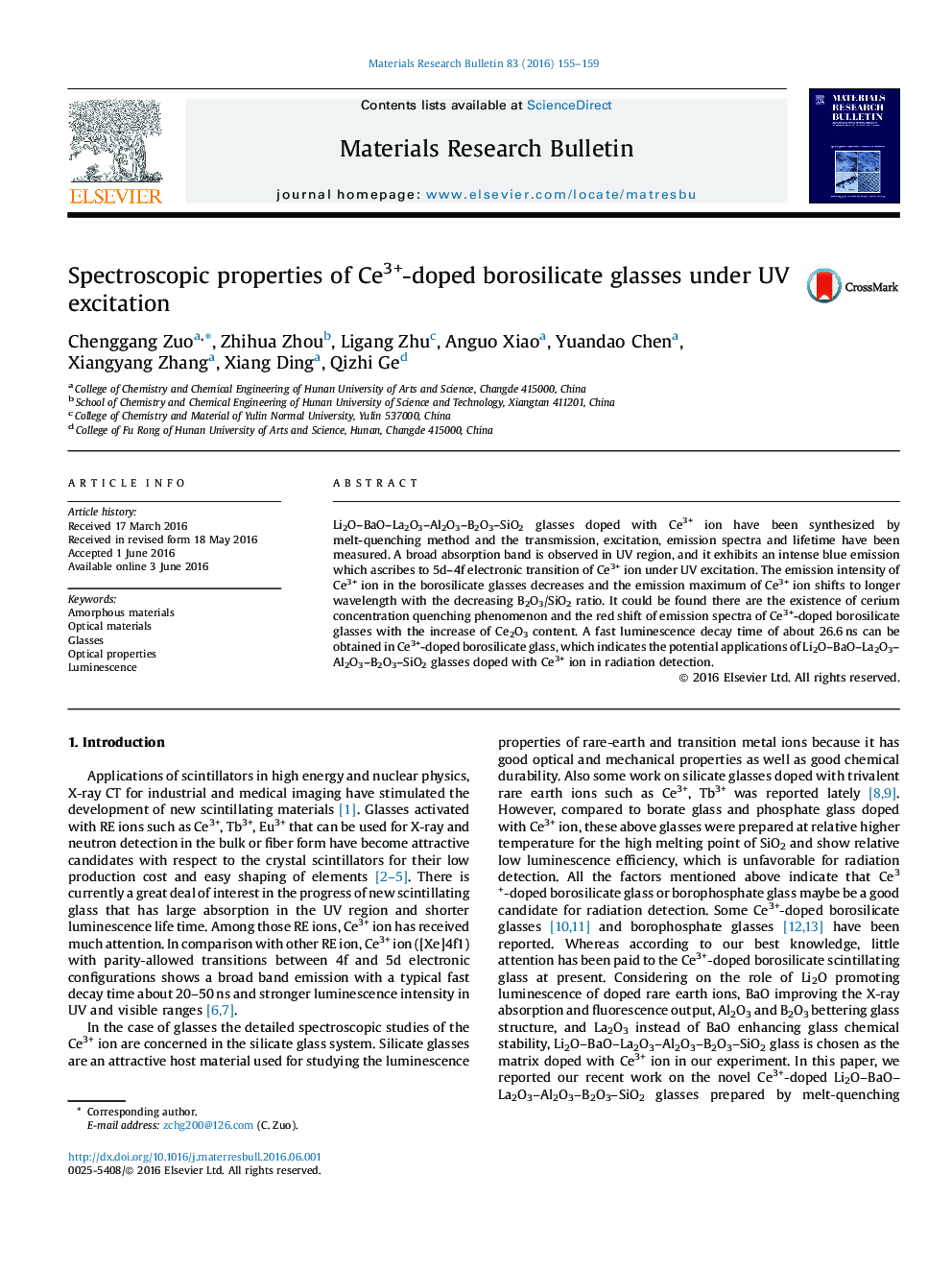| Article ID | Journal | Published Year | Pages | File Type |
|---|---|---|---|---|
| 1487018 | Materials Research Bulletin | 2016 | 5 Pages |
•Ce3+-doped Li2O–BaO–La2O3–Al2O3–B2O3–SiO2 glasses were prepared.•An intense blue emission is observed under UV excitation.•Emission intensity decreases with the decreasing B2O3/SiO2 ratio.•There are concentration quenching and red shift with the increase of Ce2O3 content.•Luminescence decay time of 26.6 ns is obtained.
Li2O–BaO–La2O3–Al2O3–B2O3–SiO2 glasses doped with Ce3+ ion have been synthesized by melt-quenching method and the transmission, excitation, emission spectra and lifetime have been measured. A broad absorption band is observed in UV region, and it exhibits an intense blue emission which ascribes to 5d–4f electronic transition of Ce3+ ion under UV excitation. The emission intensity of Ce3+ ion in the borosilicate glasses decreases and the emission maximum of Ce3+ ion shifts to longer wavelength with the decreasing B2O3/SiO2 ratio. It could be found there are the existence of cerium concentration quenching phenomenon and the red shift of emission spectra of Ce3+-doped borosilicate glasses with the increase of Ce2O3 content. A fast luminescence decay time of about 26.6 ns can be obtained in Ce3+-doped borosilicate glass, which indicates the potential applications of Li2O–BaO–La2O3–Al2O3–B2O3–SiO2 glasses doped with Ce3+ ion in radiation detection.
Graphical abstractFigure optionsDownload full-size imageDownload as PowerPoint slide
